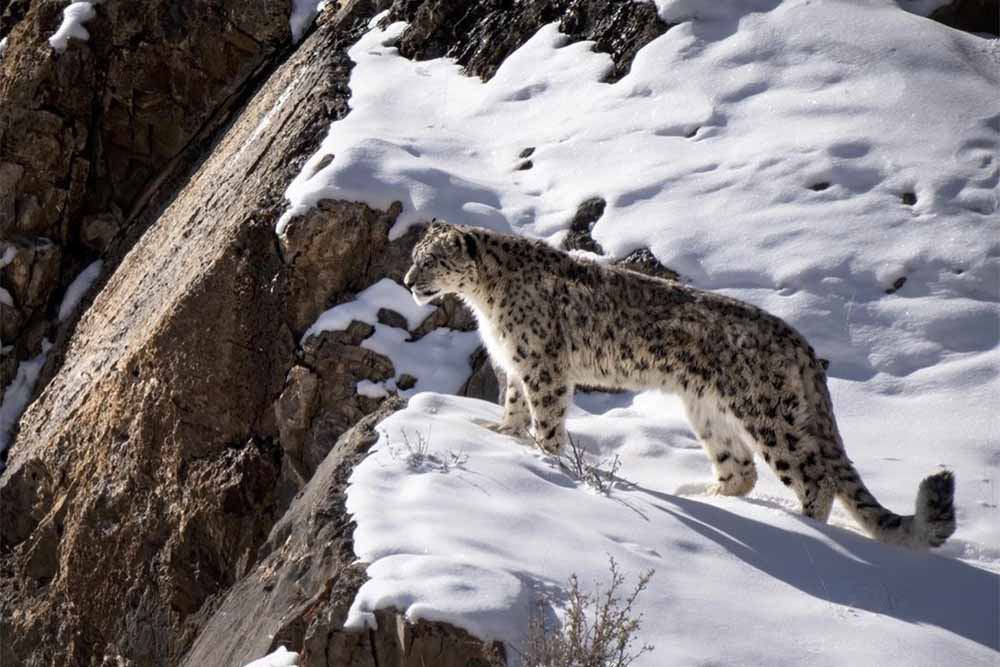Bird Photographers
They're The WorstWhy do the majority of people take an escalator and not the stairs?
Because it's easier.
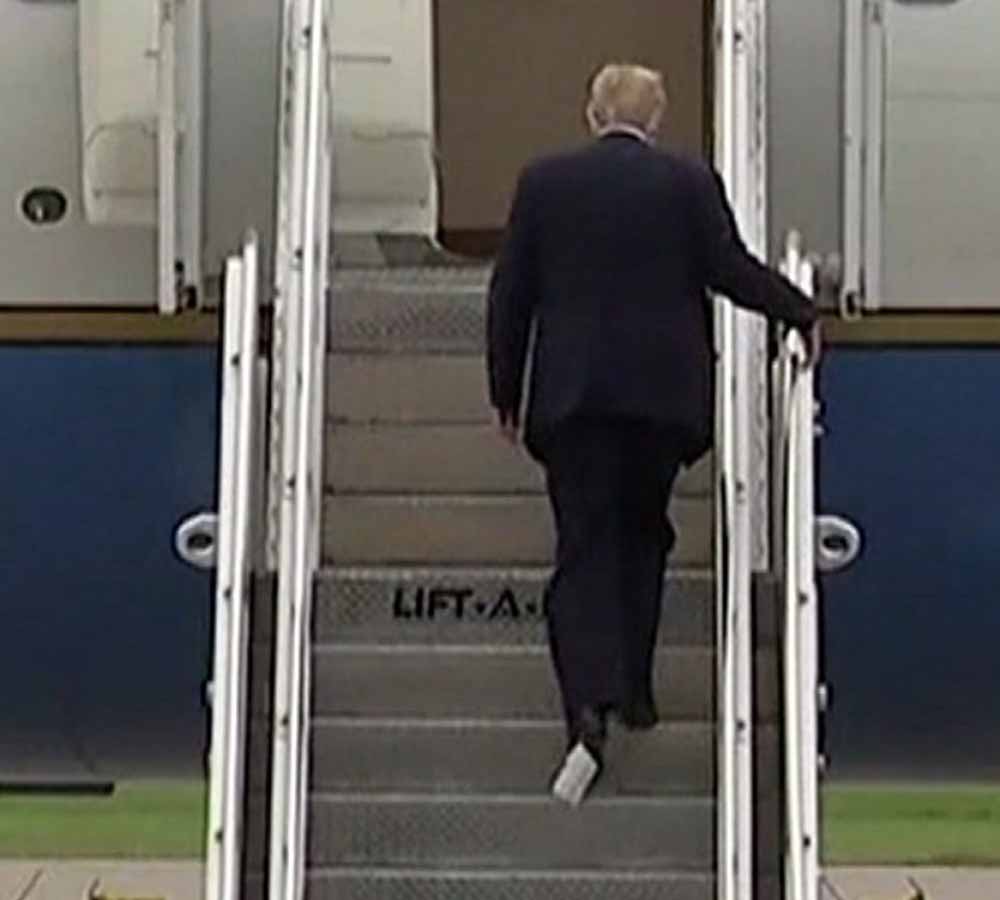
Shoulda' used the elevator
Why do people prefer to pay someone to change their car oil?
Because it's easier.
Why do people stop in the morning to buy coffee when they can make their own at home?
Because it's easier.
Why do people use an automatic washing machine and not pound them with a rock down at the local river?
You know why.
Now, OK. You might point out that in those examples it's a time saver to go the easy route. However, I bet that if the opposite were true, and it can be, people would still go for the easy way out.
And there may be other factors that push people to go the easy route. But really, when you dig down and get honest with yourself, we all try to take the easy way out of EVERYTHING.
I mean, why wouldn't you, right?
In the world of wildlife photography, things are no different. The reason why there is such a huge explosion in the number of photographers and a subsequent drowning in images of all sorts is that photography has become much easier.
Focusing is now automatic, and frankly it's so scary good that we're regularly snagging photos that just a few years ago would have been a once-in-a-lifetime lucky shot.
Exposure is no longer a mathematical struggle. Just pick an auto setting, take a shot and look at the histogram.
Again, not so long ago, you would have to wait at least a day, sometimes a week or more, to get your shots back from the processor, just to see if you exposed your out of focus shots properly.
Choice of equipment has never been greater. Not only are there more camera models, most of which are aimed at the beginner market, but you don't even need to buy one any more. Just use your phone.
The current iPhone has a 48 megapixel sensor and, assuming that you bought it to use as a phone and browser, you get a free camera that can create an image file large enough to make a mural print that will cover your lounge room wall.
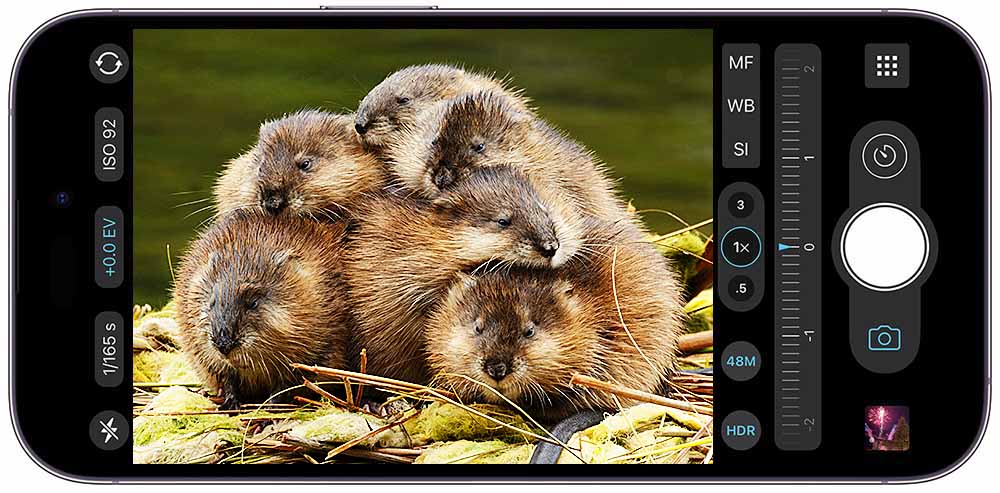
48 megapixels: yowser!!
Compare that to the first Canon 5D, a camera that revolutionized digital photography for professional studio photographers. It cost around $15,000 and had a 12.8 megapixel sensor.
The upside of modern digital photography and associated technology is overwhelming. You can step off a plane in the middle of central Africa, take a photo, check that it's sharp, correctly exposed and composed as you want it, send it via wifi/internet to an editors desk in New York and be published online, all within a few minutes.
But there are downsides. And the biggest downside is the overwhelming tsunami of crappy images drowning us all in a sea of mediocrity.
As I often say, and it's not original by any means, "If it were easy, everyone would be doing it."
Well, guess what. They are.
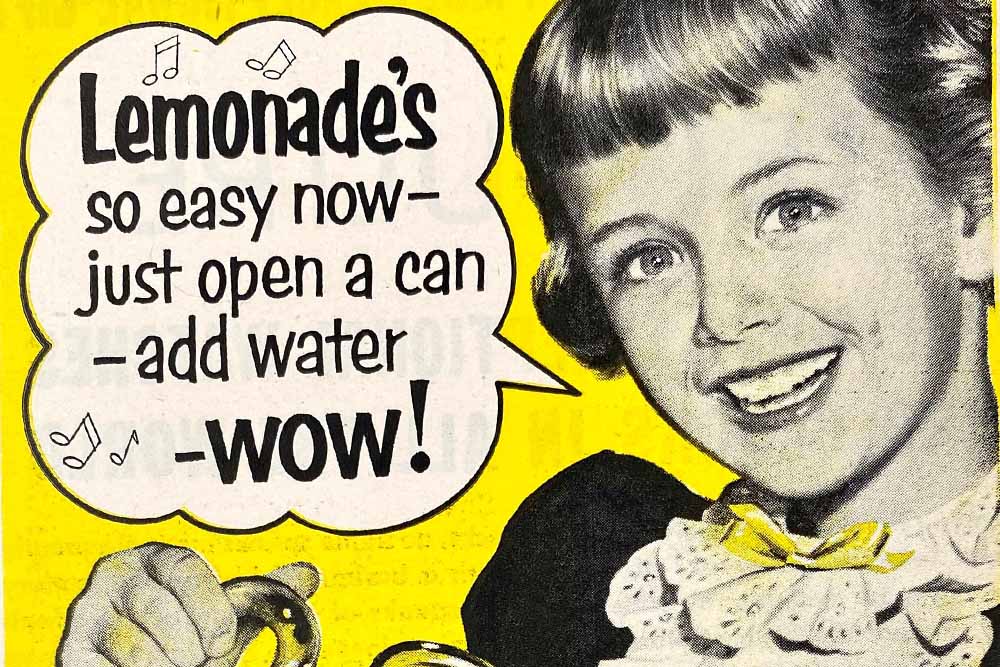
It's just so easy!!
The vast majority of photographers out there are obsessed with equipment. The latest camera body, the latest lenses, the latest tripod, tripod head, gear bag/backpack, filters. Camera body comparisons, lens comparisons, unboxing, reviews, tests, sharpness graphs, pixel peeking edge of frame 200% enlargement microscopic obsession.
If you do a search for "wildlife photography" on YouTube, or just plain google, you will end up with a vast selection of videos that are obsessed with equipment. Tests and comparisons, reviews of the latest whatever "while photographing birds at the local pond". The wildlife bit is a secondary factor, tossed in to have some sort of validation.
And yet most of the images we see are total krappa.
Sure, we need equipment, and I for one love the latest technology. There are no "good ol' days" in wildlife photography. The old days sucked. Badly. And the act of photography needs equipment, with modern gear helping us to capture images that were, frankly, impossible just a few years ago.
So while the act of photography needs gear, the act of creating an image needs something far more than that.
Great photographs start as ideas. Those ideas may, and will, change depending on all sorts of factors at the time of exposure. Or you may discover a great shot well after you return home and crank up your computer. In either case, the greatness of your image will depend more on the greatness of your mind/artistry/ideas than equipment.
I'm not talking here about being a whizz at photoshop. That sort of attitude has us drowning in a bilious sea of landscape photographs which have been transformed into focused-stacked-oversaturated-sunbeam-inserted-sky-replaced farcical crapulent dross.
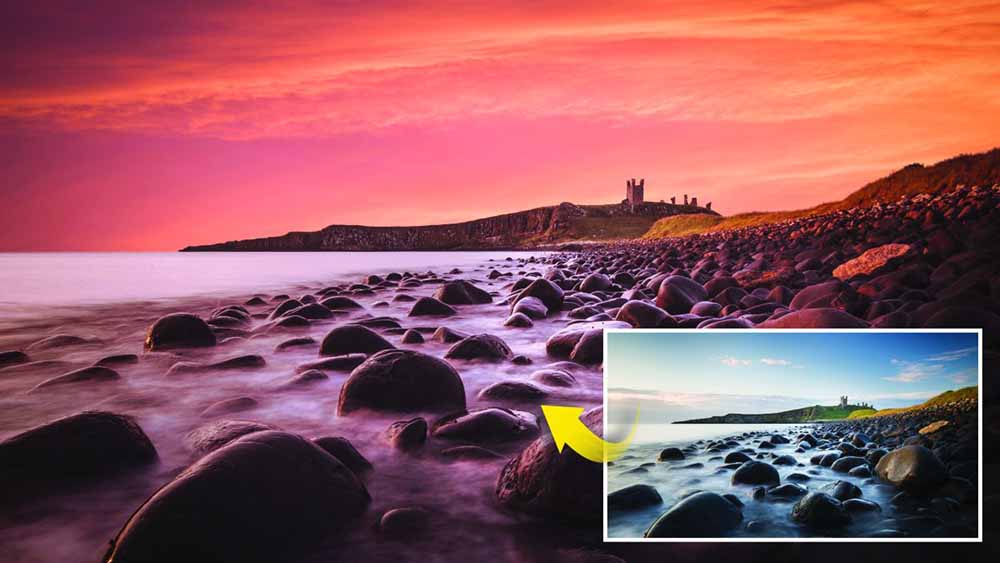
Credit: James Paterson from Camera World gets carried away
And now we turn to bird photographers.
*takes large sip of coffee*
If you were to take the entire worldwide population of those that claim to be "wildlife photographers", the majority of them would be self proclaimed "bird photographers", or at least they would make those feathered critters the main subject of their output.
Why?
Because it's easy.
Now, hol' on, needdy. Whoa there. Hold your horses. Let me explain.
The most difficult part of wildlife photography is not mastering your equipment. Sheesh. Just put it on auto and shoot.
The difficult part is finding subject matter.
That's why there are so many snow leopard shots popping up recently. It's not because a "snow leopard lens" was created or a "snow leopard" setting was introduced in a firmware update. It's because eco tourism has arrived in the remote corners of Asia. Locals are being paid to go out spotting to find leopards for the tourists, and providing accommodation and transport and all that other stuff that tourists need/want.
As a result, guides are more knowledgable about the leopard's movements, habits and breeding dens. They have become easier to find because the guides have started to understand individual leopards, their habits, territory and favourite rest areas.
It's become easier for the guides to find the subject, so photographers are responding, because it's now easier for them to get an image.
Just a few years ago, if you did a search for musk ox images, you would find a few good ones from National Geographic and a handful of "less than perfect" images taken by hunters or tourists who accidentally came across a herd thundering off into the distance.
But now there are some stunning Musk Ox images found online and in print.
Why?
You guessed it. Because it's become easier.
In 1947 a number of Musk Ox were introduced into Norway. Previous trials starting in 1925 had failed, with the last successful trial obliterated because hunters killed them all. Aren't people fun. Anyhoo, the '47' herd was protected, survived and grew, with some of them even moving into Sweden.
The upshot is that with increased numbers, tourists can now find musk ox much easier, at least in the confines of the Dovrefjell National Park.
Now, the average photographer would probably not go there to photograph musk ox as it's still a physically difficult task, hiking all that way into the park, especially in winter when the animals look great.
But overall, you don't have to launch an expedition into Greenland or Nunavut to find musk ox any more. It's become easier.
My point here, re bird photographers, is that there are so many of them (oh, so many) because it's easy. You can point your camera out the back door and find a bird. In the middle of the harshest winter, you can find a bird. At sunrise, sunset and all the harsh sunlit hours in between, you can find birds from the middle of the largest concrete jungle city to the depths of a rain forest, or far out to sea.
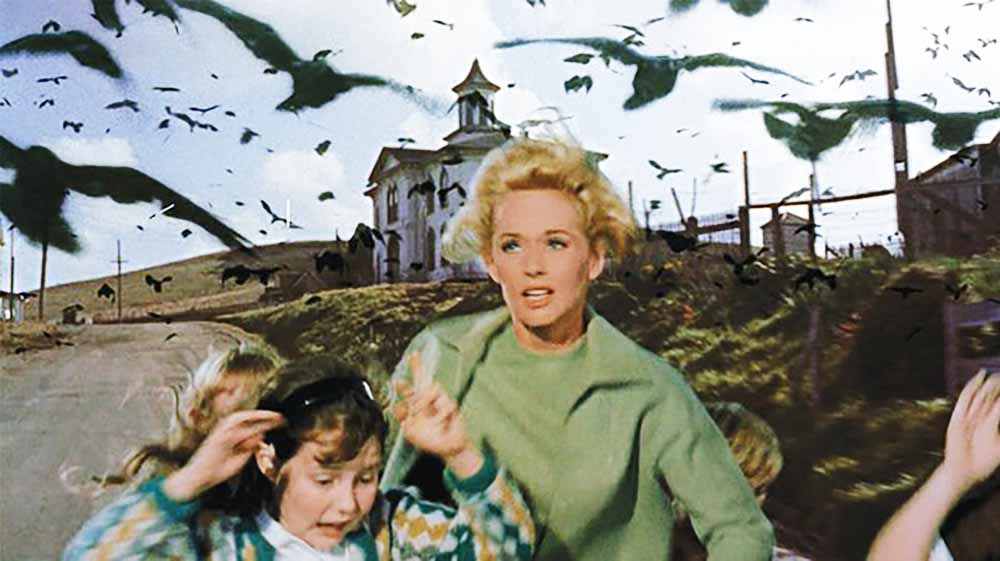
Birds!!!! They're everywhere!!!! Ruuuun!!!!
You can find those critters anywhere, any time, any day, any season.
Now compare that to other animals like snakes or moose or lions. You may find them easy enough if they're a common member of your local wildlife, but most probably not in your back yard or in the local park or city fountain.
Plus, you might find 5-20 different species of bird in one walk in the park, but you will have to fly all the way to Africa and pay a fortune to photograph a big cat.
Bird photography is, just plain and simple, easy because they're easy to find.
Add to that the propensity for humans to be lazy, and, voila, lots of bird photographers. The extension to that is lots of bad bird photographs. Sure, a few good ones, but the majority are "fuzzy-soft-out-of-focus-monotone-background-with-bird-staring-at-the-camera-on-a-perch" formula shots.
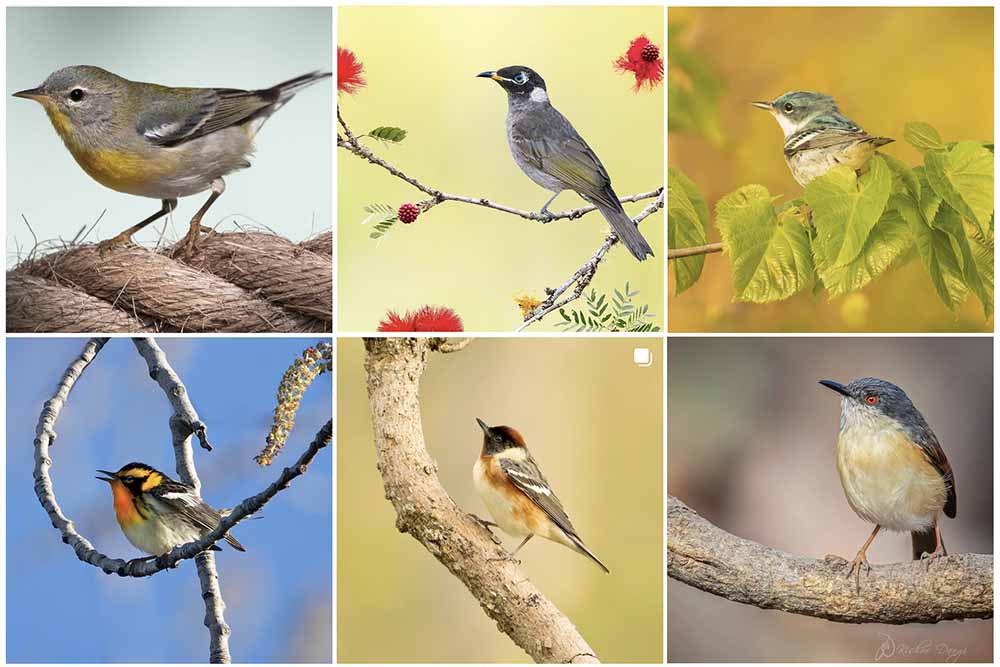
Instagram: All the same formula
They have all the mental input of a dating TV show.
And, as noted above, great images come from great ideas, not formulas.
So, what's the next step? Well, unlike studio photography, which is usually 100% controlled, wildlife photography is rather fluid. The light changes, the animal moves or doesn't or hides or turns its butt to you or stares at you or the wind comes up or the wind dies or it starts to rain or stops or snows or hails, etc. Therefore, sometimes you just have to grab what you're given.
But the really cool interactions are far more controlled, as far as your image goes. You might have a lot of time or great light or an animal with high tolerace for you or unaware of you or all of the above. That's when you can dig deep and produce something that's not to formula.
Like what? Well, how do I know. I'm not there, you are.
Maybe a first step is to actually sit and think about what YOU want to say about a certain animal. So take some time away from noise and bustle and consider what critters you're most likely to see on your next outing, plus a few that you probably won't see but, then again, you just might. You know, a puma or a platypus or a wolf or an eagle, depending on where you live.
If it's a big animal, such as a bison or elk or moose or elephant, how do you want to portray them? What do you want your image to say? I'm pretty sure that if you have a bit of post beginner experience you won't be happy with a "bison in full harsh midday sun staring at me in a grassy field" image. At least I hope not.
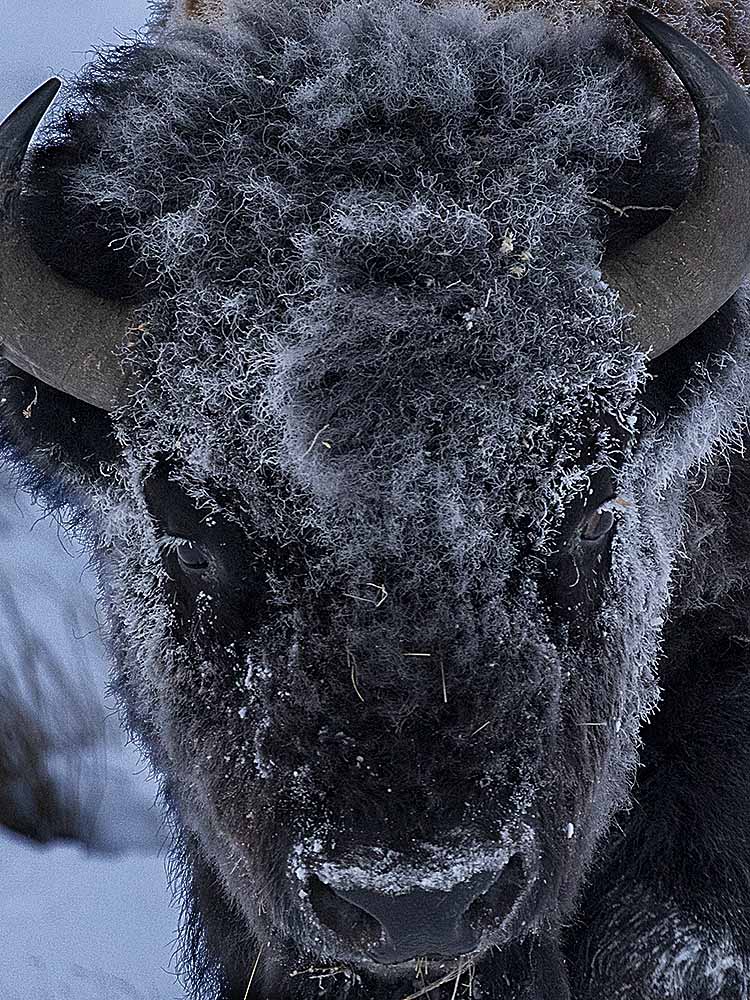
What are you trying to say? What are you conveying?
So consider the story you want your image to portray. Is it a stand alone image or part of a story? Do you want to emphasise it's bulk, it's armoury, it's stoic nature in face of harsh weather, or some other aspect of its nature?
What is your personal feeling, your attitude to that particular animal?
All advertising is based on fear (think about it for a moment, it's always fear of something). Is that what you want to dig into, to portray the animal in a way that taps into our natural fears? Do you want to portray that bear as a powerful predator or as a loving parent, a part of the landscape or THE landscape?
Is there an aspect of the animal's physical makeup that deserves some exploration? Its eyes, the texutre of its fur, its defense system, its attack system, its colour or lack thereof, skin texture, plumage? How will you present that aspect?
The good news is that, surprisingly, creativity can be learned. You don't have to be a particularly talented or artistic personality, at least not at the beginning. You can learn. First step is to learn what you want to say, say it then show what you said, just like the basic steps of public speaking.
Further, while you may have the creativity of a house brick, or a picture of a bird on a stick, if you make an effort you will learn and improve and even excel in the creative process.
All you have to do is to take the time and make the effort to eschew simplistic images, to reject formulas and, instead, take the risk to expose your philosophy, using your equipment, your tools, to carve out an idea, a viewpoint, and not some tired cliche.
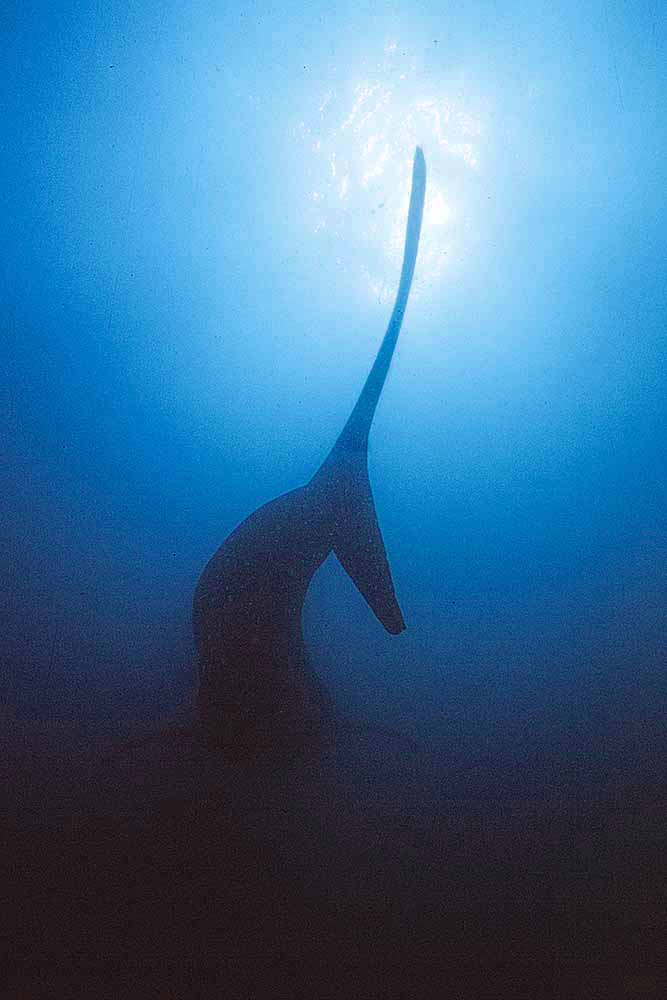
Whale shark

